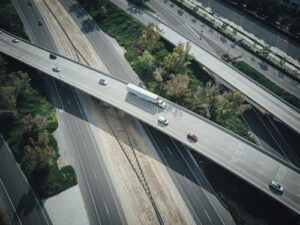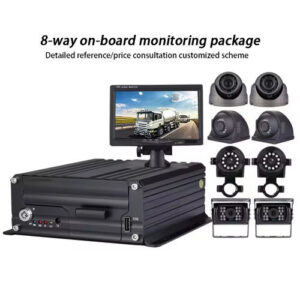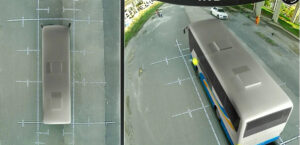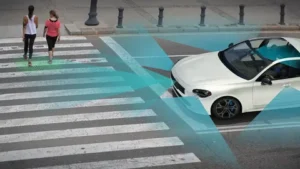In today’s fast-paced world, ensuring road safety goes beyond advanced driving techniques—it also depends on the smart technology integrated into our vehicles. A Crash Recorder Camera is one such device that plays a vital role in recording critical moments during accidents, providing indisputable evidence for investigations and insurance claims. In this article, we delve into what a Crash Recorder Camera is, its core features, and how to choose and install one for optimal performance.
What Is a Crash Recorder Camera?
A Crash Recorder Camera is a specialized device designed to capture video and data during vehicular collisions or sudden deceleration events. Unlike standard dashcams, these devices are built to trigger automatically upon detecting an impact through built-in G-sensors. This ensures that even if you are unable to manually operate the camera, the device records the incident without delay.
For more insight on how recording devices enhance road safety, check out the National Highway Traffic Safety Administration (NHTSA) website, which provides detailed guidelines on vehicle safety technologies and their impact on accident investigations.
Core Features of a Crash Recorder Camera
1. Automatic Impact Recording
Equipped with sensitive G-sensors, Crash Recorder Cameras are engineered to start recording automatically when they detect sudden impact or rapid deceleration. This feature ensures that no critical moment is missed, providing valuable evidence for reconstructing accident events.
2. High-Definition Video & Night Vision
High-resolution cameras (typically 1080p or above) capture clear footage in all lighting conditions. Many models also include night vision capabilities to ensure that video quality remains uncompromised even in low-light situations. According to Consumer Reports, clear video evidence is crucial in accurately assessing crash incidents and assigning fault.
3. Multi-Angle Recording
Some advanced models offer multi-channel recording, capturing multiple angles simultaneously (front, rear, or even panoramic views). This multi-perspective approach provides a comprehensive view of the incident, which is invaluable during accident analysis.
4. Data Security and Storage
Crash Recorder Cameras typically feature robust data storage options, including loop recording, automatic file locking upon impact, and sometimes even cloud backup. These features protect the recorded data from being accidentally overwritten or tampered with, ensuring that the evidence remains intact.
For additional expert reviews and recommendations on video recording technologies in vehicles, visit TechRadar’s Best Dash Cams Guide.
How to Choose the Right Crash Recorder Camera
When selecting a Crash Recorder Camera, consider the following factors:
Video Resolution and Quality
- Resolution: Look for cameras that offer at least 1080p recording to ensure every detail is captured.
- Night Vision: Verify that the camera performs well in low-light conditions.
Sensor Sensitivity & Trigger Mechanism
- G-Sensor: Ensure that the device has a sensitive and reliable G-sensor for prompt accident detection.
- Impact Lock: Confirm that the camera can lock and save critical footage immediately after an incident.
Storage & Data Protection
- Storage Capacity: Choose devices that support high-capacity storage options and offer loop recording.
- Data Encryption: Consider cameras that provide data encryption and secure backup options, which are essential for maintaining evidence integrity.
User Reviews and Reliability
Reading user reviews and expert opinions can provide further insights into the reliability of a product. Trusted sources like Consumer Reports and TechRadar are excellent starting points for evaluating product performance and reliability.
Installation & Best Practices
Optimal Installation
Install your Crash Recorder Camera in a location that offers an unobstructed view of the road—commonly near the rear-view mirror or center of the dashboard. This positioning helps capture both forward and peripheral events. For a step-by-step installation guide, you might find wikihow’s dashcam installation guide useful.
Regular Maintenance
- Check Equipment: Regularly inspect the camera, wiring, and storage components to ensure they are in proper working order.
- Software Updates: Keep the firmware updated to benefit from the latest features and security enhancements.
- Data Management: Periodically back up recorded data and clear old files to prevent storage overflow while safeguarding important footage.
Conclusion
A Crash Recorder Camera is more than just a recording device—it’s a vital tool for enhancing road safety and ensuring accountability during accidents. With features such as automatic impact recording, high-definition video quality, and robust data protection, this device provides critical evidence that can influence insurance claims and legal proceedings.
By carefully considering factors like resolution, sensor sensitivity, and data security, you can choose the right Crash Recorder Camera to meet your safety needs. For further insights and detailed reviews, consult authoritative resources such as the NHTSA and Consumer Reports.
Investing in a quality Crash Recorder Camera is a proactive step toward safer driving and greater peace of mind on the road.






